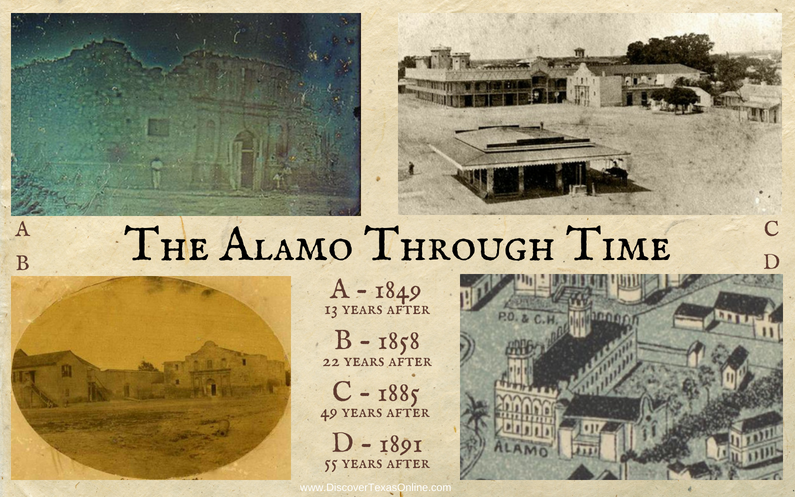
It’s not an exaggeration to say that the arching facade of the Alamo in San Antonio is a symbol recognized worldwide…but it wouldn’t be familiar to Travis, Bowie, and Crockett. Why?
…because in 1836, there was no arch.
The original Spanish mission, built between 1755-1793, was square across the top.
The Inventory of the Mission San Antonio de Valero, written in 1772 to describe the progress of construction, noted that the church’s roof had not yet been built. Only the stone ribs for a future barrel vault were in place. A drawing made by Edward Everett in 1847 confirms that only the ribs of the roof remained at that time. The arch was added until sometime around 1850 when the U.S. Army Quartermasters Corps occupied the building and used it as a depot.
What we call the Long Barrack was originally a two-story convento (convent) where the Spanish missionaries had their sleeping quarters and offices. During the Battle of the Alamo in 1836, many of the Alamo defenders retreated into this building to make their last stand. Of course, Santa Anna’s Mexican Army bombarded both the church and the convento, then the limestone ruins of both buildings were exposed to the elements for eleven years until the U.S. Army began to make repairs. Sometime during the 1880s, the convento was incorporated into a general store owned by Henri Grenet, who covered the walls with wooden framework and two-story open air walkways. When Mr. Grenet died, his heirs sold the property to the Hugo-Schmeltzer company. The somewhat gaudy decorations were removed, but the wooden walls still hid–and protected–the original limestone building. It was not until 1913, when the future of the Alamo was a topic of hot debate, that the wooden walls were removed and the second story of the convento was torn down, leaving the thick stone walls we see today.
If you’re interested, Image D is a detail from a much larger 1891 map of San Antonio beautifully reproduced by Copano Bay Press. You’ve heard me mention this company before because of the wonderful work they do in researching, locating, and reproducing original source documents from Texas history that would otherwise be lost. I love to browse their selections and have added several to my personal library!
You can read more about the history of the Alamo at the Alamo website.



